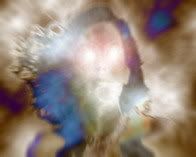The BPM of a song is not only relevant to beat mixing, it's also strongly related to music genre. For example, if a DJ raises the beats per minute or BPM (i.e., the drum beats) of a hip hop song to approximately 135 BPM, the song's beats become "break-beat." Alternatively, if a DJ lowers the BPM of a techno or hard house track to 90 BPM, the song becomes "trip hop."
"Trip hop," for example, is characterized as being downtempo jazz, funk, and soul-inflected break-beats that includes experimental psychotropic atmospherics (i.e, the "trip" part). Even though trip hop is not downtempo "techno" and "hard house" tracks per se, a DJ is able to create -- in a live performance setting -- a trip hop-like track by simply slowing down the BPM.
A rough guide showing the relationship between BPM and genre is provided below:
GENRE
BPM RANGE
Hip Hop/Rap/Trip-Hop
60-110 BPM
Acid Jazz
80-126 BPM
Tribal House
120-128 BPM
House/Garage/Euro-Dance/Disco- House
120-135 BPM
Trance/Hard House/Techno
130-155 BPM
Breakbeat
130-150 BPM
Jungle/Drum-n-Bass/Happy Hardcore
160-190 BPM
Hardcore Gabba
180+ BPM
As the chart above shows, music genres are generally confined to a specific BPM range. For example, a house track would not be considered "house" (in the traditional sense) if it had a tempo of 70 BPM. Likewise, a hip hop track would not be considered "hip hop" (again, in the traditional sense) if its BPM was pitched up to 140 BPM.
If you're a DJ that is specialized in a specific genre such as "only tribal house," it's very unlikely that you'll have to spend time determining and labeling BPM for the tracks in your music library. This is because these tracks are already near each other in terms of BPM range. On the other hand, some genres -- such as hip hop -- have a wider BPM range and may require a little time calculating and sorting songs by BPM.











